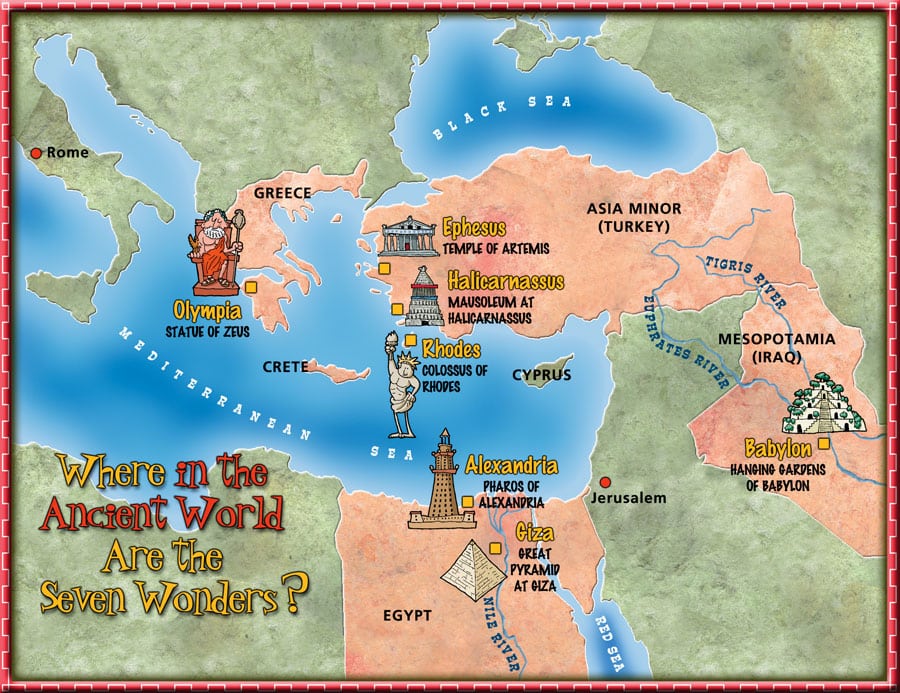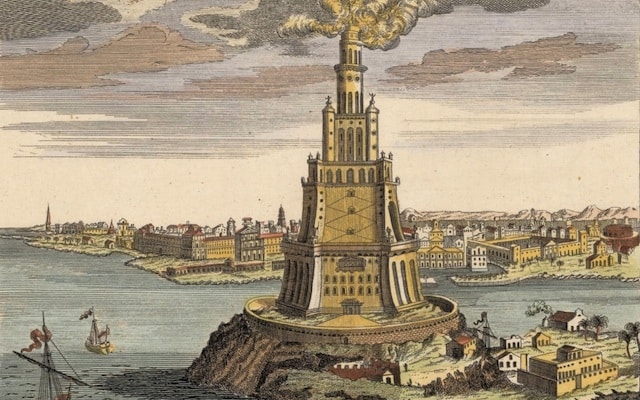
The Pharos Lighthouse of Alexandria
{source}
Can you name them? There have been many versions of “The Seven Wonders of the World” throughout the ages, but the most prominent (and probably original) version of the Ancient Seven Wonders was compiled in a poem in 140 B.C. by Antipater of Sidon, a Greek writer.
I have set eyes on the wall of lofty Babylon on which is a road for chariots, and the statue of Zeus by the Alpheus, and the hanging gardens, and the Colossus of the Sun, and the huge labour of the high pyramids, and the vast tomb of Mausolus; but when I saw the house of Artemis that mounted to the clouds, those other marvels lost their brilliancy, and I said, 'Lo, apart from Olympus, the Sun never looked on aught so grand.'
~ Antipater, Greek Anthology IX.58
Antipater, along with Philo of Byzantium, Strabo, Herodotus and Diodoros of Sicily, is responsible for providing the first descriptions of these remarkable structures. Here is the list commonly believed to be the original Seven Wonders of the Ancient World, taken from National Geographic Kids:
The Pyramids of Giza, Egypt:
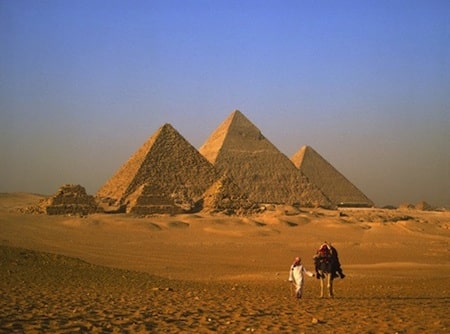
Photograph by David Sutherland/The Image Bank/Getty Images
{source}
Built: About 2,600 B.C.
Massive tombs of Egyptian pharaohs, the pyramids are the only ancient wonders still standing today.
Hanging Gardens of Babylon, Iraq:
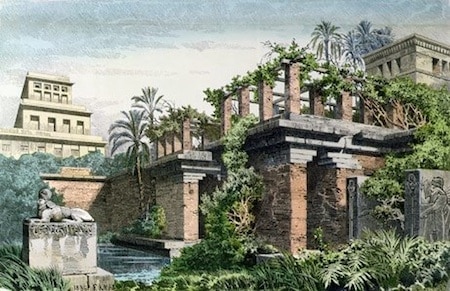
Illustration by Ferdinand Knab/The Bridgeman Art Library/Getty Images
{source}
Built: Date unknown
Legend has it that this garden paradise was planted on an artificial mountain, but many experts say it never really existed.
Temple of Artemis at Ephesus, Turkey:
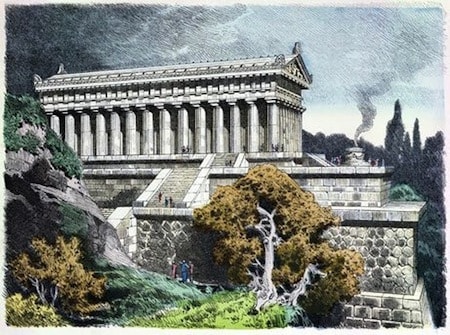
Illustration by Ferdinand Knab/The Bridgeman Art Library/Getty Images
{source}
Built: Sixth century B.C.
This towering temple was built to honor Artemis, the Greek goddess of the hunt.
Statue of Zeus, Greece:
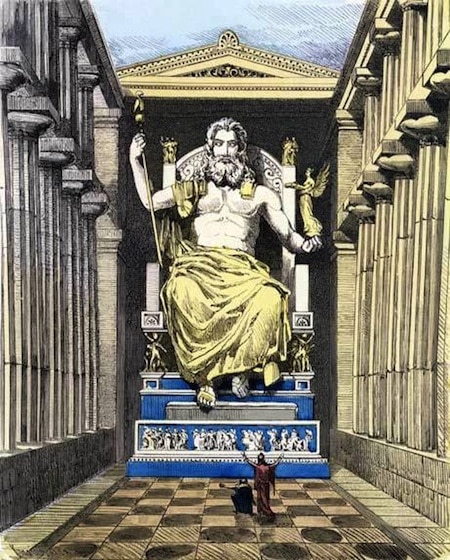
Illustration by Ferdinand Knab/The Bridgeman Art Library/Getty Images
{source}
Built: Fifth century B.C.
This 40-foot (12-meter) statue depicted the king of the Greek gods.
Mausoleum at Halicarnassus, Turkey:
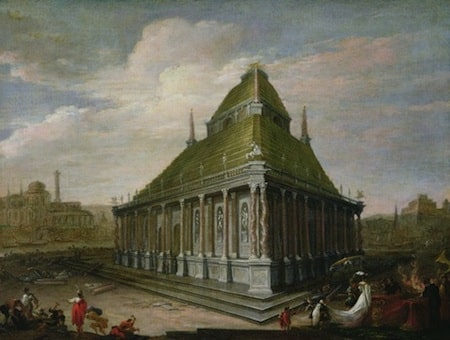
Illustration by Ferdinand Knab/The Bridgeman Art Library/Getty Images
{source}
Build: Fourth century B.C.
This elaborate tomb was built for King Mausolus.
Colossus of Rhodes, Rhodes:
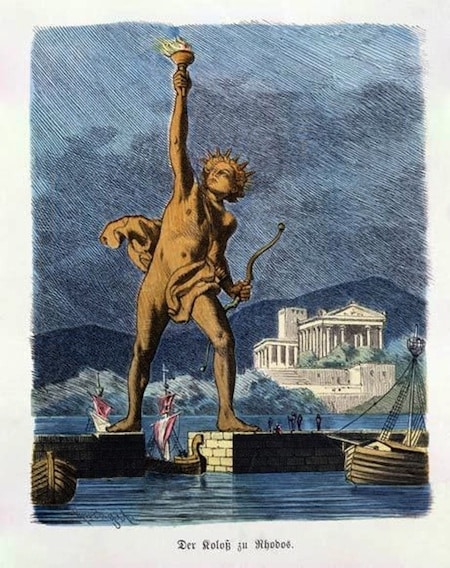
Illustration by Ferdinand Knab/The Bridgeman Art Library/Getty Images
{source}
Built: Fourth century B.C.
A 110-foot (33.5-meter) statue honored the Greek sun god Helios.
Lighthouse of Alexandria (The Pharos), Egypt:
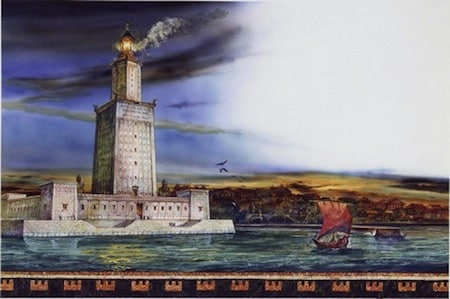
Illustration by De Agostini/Getty Images
{source}
Built: Third century B.C.
The world's first lighthouse used mirrors to reflect sunlight for miles out to sea.
Of the original Seven Wonders, only the Great Pyramid of Giza (the oldest of the ancient wonders), remains relatively intact.
Here’s a map showing where the Seven Wonders are located (click to enlarge):
{map created by Michael Kline, source}
You can find more information, photos and videos here.
Your kids might then like to try this Seven Wonders game by Nova.
Enjoy!
The Pyramids first, which in Egypt were laid;
Next Babylon’s Gardens, for Amytis made;
The Mausolos’ Tomb of affection and guilt;
Fourth, the Temple of Dian in Ephesus built;
The Colossus of Rhodes, cast in brass, to the Sun;
Sixth, Jupiter’s Statue, by Phidias done;
The Pharos of Egypt comes last, we are told,
Or the Palace of Cyrus, cemented with gold.
~ Anonymous (taken from Bartlett’s Familiar Quotations)
SLO Classical Academy is not affiliated with any of the above mentioned websites or businesses.





